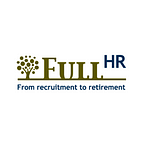Setting the Right Workplace Safety Goals
Every company has a clear interest in creating a safe work environment for its employees. Safety is paramount for the health and wellbeing of your team members, for ongoing productivity, and for legal compliance. Of course, simply expressing a zeal for safety is not enough. It’s critical to go further, developing a robust plan to protect your workers from accidents and injury.
A good starting point is to establish the right workplace safety goals. While those goals may look a little different from one company to the next, there are a few steps that can help any company develop a sound paradigm for measuring workplace safety initiatives.
Tips for Setting the Right Workplace Safety Goals
Involve Stakeholders
First and foremost, it’s critical to solicit feedback from all stakeholders, including team members and managers. They’re the ones who are in the trenches each day, and they’re the ones who can provide insight into the biggest safety obstacles and barriers that they see.
Identify Specific Hazards
Your workplace safety goals will typically revolve around prevention and control of the most common risks that employees face. As such, it’s important to start with a clear sense of what those hazards are, whether eye strain, back injuries, or exposure to toxic materials. Use employee feedback, past injury data, walkthroughs, and audits to identify your biggest threats.
Align Safety with Mission
It’s also important to ensure that employees see a clear connection between safety and the company’s mission. Emphasize the ways in which achieving your safety goals helps your team develop the best product or service, create a healthy culture, aid customers, and serve the community.
Set SMART Goals
Consider the SMART framework for your workplace safety goals. That is, create goals that are specific, measurable, achievable, relevant, and bound by time. Here are some examples of SMART safety goals:
● Conduct at least one workplace safety training session every two months.
● Create safe work instructions for all workplace tasks by the end of Q2.
● Close 80 percent of hazardous condition reports within 30 days of submission.
Create an Action Plan
Once you identify some goals, create a corresponding action plan to help you achieve those goals. Make sure you specify who is accountable for each step, and the deadline associated with those steps.
Evaluate and Revise Your Plans
Solicit feedback and check your progress regularly. Don’t hesitate to revise your workplace safety goals as needed, or to fine-tune your plans for achieving those goals.
Let’s Talk Safety
Ready to take the next step on workplace safety? We’d love to help. Reach out to the team at FullHR to schedule a consultation with us.
